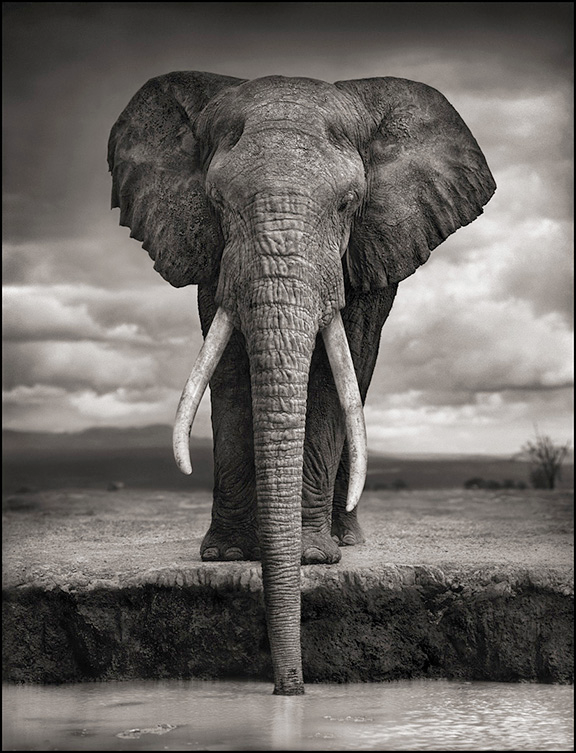
 His name was Igor. For 49 years, he wandered the plains and woodlands in East Africa, so relaxed that he allowed me to come this close to take his portrait.
His name was Igor. For 49 years, he wandered the plains and woodlands in East Africa, so relaxed that he allowed me to come this close to take his portrait.
Two years later, in October 2009, he was killed by poachers for his ivory.
Seeing many of his brethren being killed in the same way on an almost weekly basis in the Amboseli ecosystem, and no longer able to sit back and allow the destruction to continue, I co-founded Big Life Foundation in 2010 with one of the most respected conservationists in East Africa, Richard Bonham. The goal: to protect a massive area of the Amboseli/Tsavo/Kilimanjaro ecosystem straddling Kenya and Tanzania, where Igor had lived.
Big Life became the first organization in East Africa to have co-ordinated patrols operating on both sides of a country’s borders. (The animals don’t pay attention to borders. Nor do poachers. So neither can we.)
Eight years later, Big Life protects 1.6 million acres with more than 300 rangers in 36 permanent and mobile outposts. With the aid of multiple patrol vehicles, tracker dogs, night vision equipment and aerial monitoring, this new level of co-ordinated protection for the ecosystem has brought about a dramatic reduction in poaching of ALL animals in the region, with numerous arrests of some of the worst, most prolific poachers.
However, when you’re trying to protect such a large area, a couple of hundred rangers will only get you so far. These achievements could never have happened without one critical element: The collaboration with, and support of the local communities.
Wildlife constantly moves far beyond meager park boundaries into the huge unprotected areas ever more populated by humans. This means that the only future for conservation of animals in the wild is to work closely with the local communities. This is at the heart of Big Life’s philosophy. We believe that this approach can be the only future of conservation in East Africa.
Big Life does much more than protect the animals from poachers and arrest wildlife traffickers. The greatest challenge has become the battle for space for animals, as humans and human development encroach rapidly on what was wildlife habitat with often deadly consequences. As a result, Big Life is erecting hundreds of kilometers of fence to prevent elephants from being speared in their attempts to raid farmers’ crops. Big Life helps maintain a healthy and even growing population of lions and other predators by providing financial compensation to herders’ who lose livestock to those animals. Big Life manages and leases land conservancies, critical reservoirs of protected land ever more in demand for other uses by man.
Because of all this, many of the local community understand how Big Life’s conservation programs helps support them economically (beyond the hundreds employed across the ecosystem as rangers and other staff within Big Life.)
We began Big Life eight years ago because we saw that something positive could be done. So far, thanks to the generosity of donors from around the world, and the committed work of the teams in Kenya and Tanzania, Big Life has had great success in helping protect such an extraordinary and unique ecosystem.
To learn more about Big Life, and to donate to continue this important work, please go to:
Thank you,
Nick Brandt
August 2018